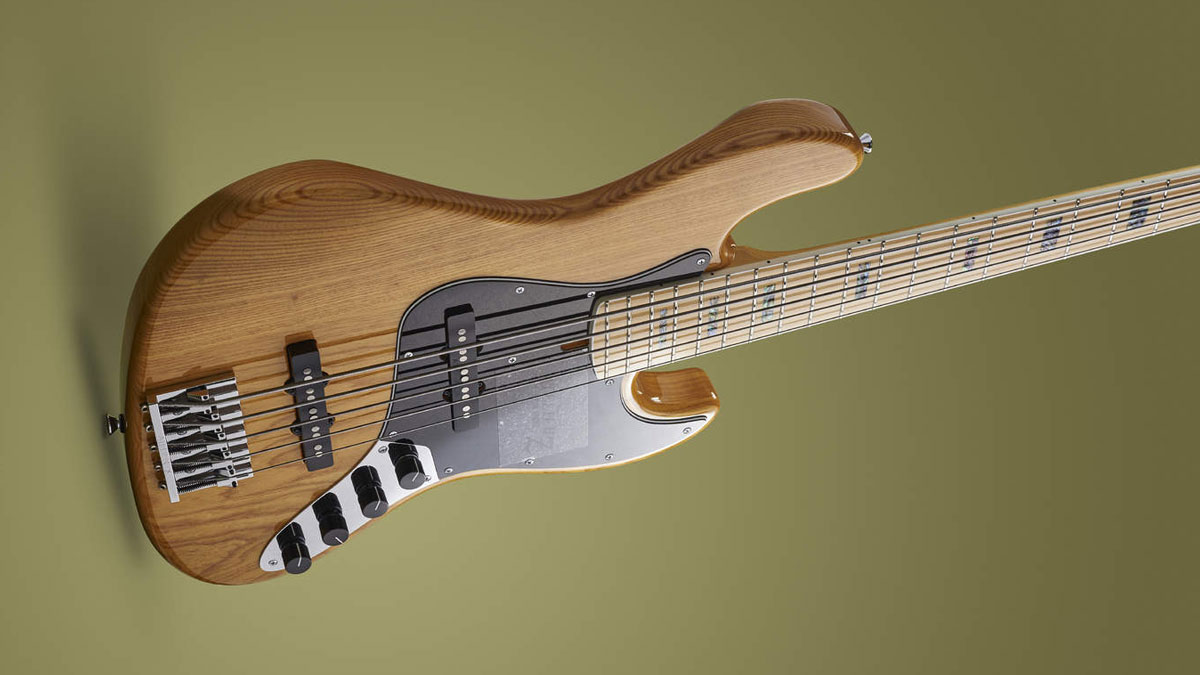MusicRadar Verdict
A super-Jazz with great attention to detail.
Pros
- +
Highly playable.
- +
A tone to die for.
Cons
- -
Not cheap.
MusicRadar's got your back
The Atelier Z brand from Japan has been predominantly used by Japanese bassists over the years, but now Jerry Barnes, globetrotting with the reinvigorated Chic, has one of his own.
Filling the late Bernard Edwards’ considerable shoes requires a lively, groove-laden bass tone capable of shaking the foundations of venues worldwide. This fiver adds a low B-string to the mix, but does it warrant a pricetag of just under £2500? Let’s see!
Build
This instrument is steeped in vintage Jazz Bass vibes. At 4.3kg (9.5 lbs), it’s not the lightest Jazz on the block, and it certainly feels substantial. It sports all the usual Jazz features - offset body, chrome control plate, single-coil pickups, block inlays (of abalone, no less) - and it projects an air of class from the off. The deep lower cutaway offers unhindered access to the upper reaches of the 21-fret bound maple neck, while the front and rear contouring to the gloss-finished ash body give the player some comfort.
The block inlays are complemented by black dot markers along the side of the neck, while the chrome hardware and black control set maintain the vintage look. Gotoh machine heads have been used in a four-over-one arrangement and turn sturdily and smoothly, as do the volume/volume/bass/treble controls. The second volume control offers an active/passive switch courtesy of a push/pull operation. EQ controls for bass and treble are boost only for bass, but boost/cut for the treble EQ. The three-ply black scratchplate sports a vinyl covering around the G-string snapping area to protect the plate from scratches.
The bass is very well set up, with a sleek, playable string action across the whole neck, no sharp fret edges that I could find and a 19mm string spacing that makes the neck an absolute breeze to navigate. The maple fingerboard is broad in the upper region and although the nut width is 47mm, this doesn’t affect the playable nature of the neck. That said, the dimensions in accommodating the low B-string mean the slim proportions of a standard Jazz Bass neck have necessarily been forfeited. However, the shallow D-shaped neck profile does much to counterbalance the broad nut. There is some headstock bias, but this is remedied once the bass is placed on a strap.
Sounds
Mr Barnes’ playing tone has considerable bite, and seriously cuts through Chic’s overall mix. This bass offers that option, but its flat tone is a little darker and throatier, courtesy of the additional timber. The active performance is very impressive - the bass boost does much to bring power to the tone, while the treble EQ offers some finesse and refinement, particularly when slapping.
The E-string has an earthy quality that sets it apart, and at all times, punch is not a quality this bass lacks. Percussively, the instrument responds very well; slapped notes display a tight thickness that you would associate with single-coil pickups, and popped notes fly off the fingerboard, cutting through and standing out. Fingerstyle lines have the recognisable bounce, along with a degree of honk, that you might expect as a matter of course. The low B-string can dominate the tone if used to play root-octave passages, so back off the EQ accordingly.
As active tones are what this bass is really all about, its passive display is quite tame, almost quiet in fact. Although it offers a ‘get out of jail’ solution if your battery dies, I doubt you’ll be switching into passive mode as a preference. In terms of playability, the Atelier scores high marks: it really is a player’s bass, finished to a very high standard.
There’s no doubting that this is a high-quality bass from top to bottom. It has all the hallmarks of a classic Jazz in a souped-up package and although cheaper alternatives may exist, we doubt they will play as well as this. Start saving!
With its latest free update, Ableton has finally turned Note into the app I always wanted it to be
Technically capable, but struggle to make your tunes sound musical? 5 simple music theory hacks to make your tracks stand out
"Despite its size, it delivers impressive audio quality and premium functions as well as featuring a good selection of inspired sounds": Roland GO:Piano 88PX review










